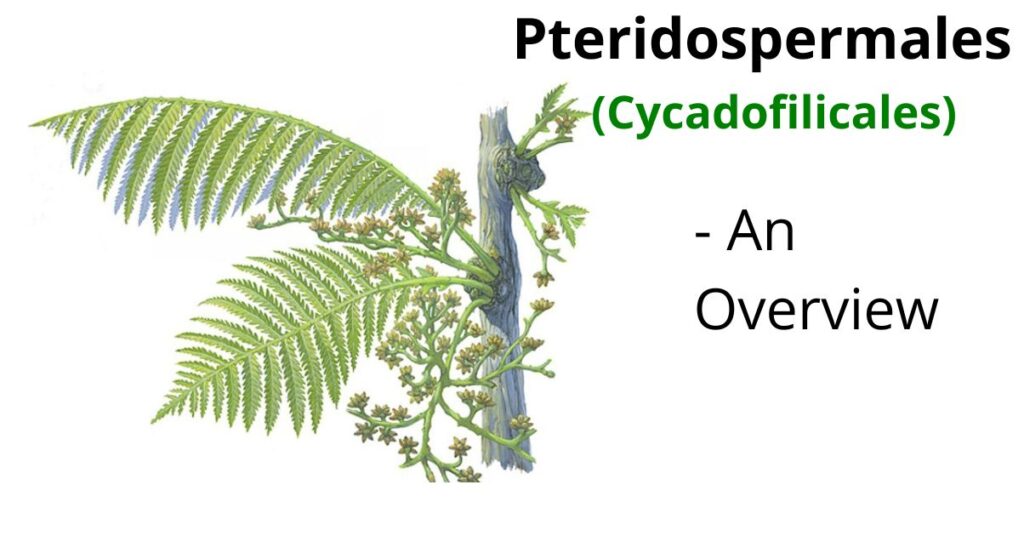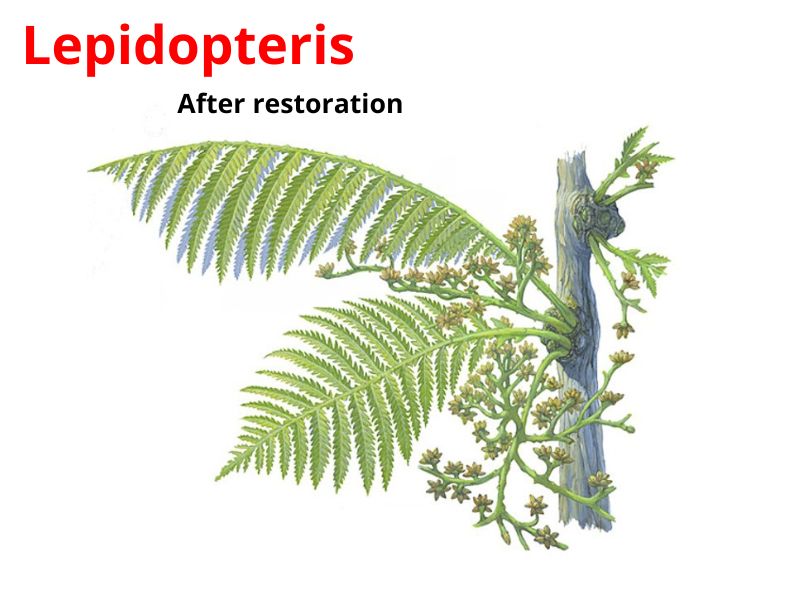The Pteridospermales or Cycadofilicales are characteristic gymnospermous plants that bore fern-like foliage, which in turn bore seeds that were unprotected. Hence, they are known as seed ferns.
Pteridospermales is a very large order that includes a heterogeneous assemblage of tree-like organisms. The plants lived through the Carboniferous period, reached their climax, and became extinct in the Jurassic period of the Mesozoic era.

Characteristics of Pteridospermales
- Plants possessed erect, slender, or weak stems with large frond-like leaves.
- Primary xylem was in the form of a solid or medullated protostele and was usually mesarch, rarely exarch.
- Secondary wood was monoxylic.
- Tracheids of secondary wood had multiseriate-bordered pits on their radial walls.
- The leaves were large, fern-like, and pinnately compound. They were arranged spirally at the apex of the stem.
- The leaves of all types were covered by a resistant cuticle.
- Microsporangia were exanulate and, sometimes, grouped into synangia.
- Megasporophyll were like foliage leaves.
- The integument was vascularized.
- The nucellus was also vascularized in some ovules.
- No pollen tubes were present in the pollen grains.
- The pollen grains (megaspores) may be monolete or trilete.
- Megaspore was surrounded by a thick wall.
- The seeds were not borne on inflorescence or cones.
- Seeds had a considerable resemblance to those of present-day cycads.

Classification of Pteridospermales
Arnold (1948) divided Pteridospermales into three families. Viz-
- Lyginopteridaceae
- Medullosaceae
- Calamopityaceae
Sporne (1974) divided it into the following seven families:
- Lyginopteridaceae
- Medullosaceae
- Calamopityaceae
- Glossopteridaceae
- Peltaspermaceae
- Corystospermaceae
- Caytoniaceae
